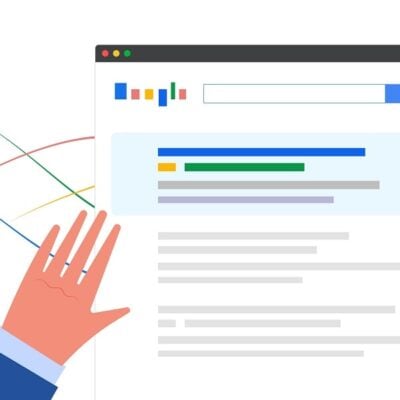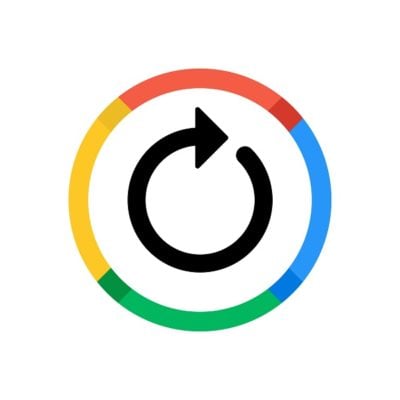This article was first published on March 28, 2016, and last updated in June 2021.
Table of Contents
- How Do I Find Drop-Offs in Google Analytics?
- What Does Bounce Rate Mean in Google Analytics?
- How Do I Find the Bounce Rate in Google Analytics?
- What is the Exit Rate in Google Analytics?
- How to Use Google Analytics Behavior Flow to find Drop-Offs
- Abandoned Shopping Carts
In this article we will discuss how to use Google Analytics to see where your customers drop off your site. We will talk about how to interpret bounce rates and drop off rates, and how to know why a customer abandoned their online shopping cart. Understanding your site visitor’s intent, and using Google Analytics, can help you take action to be more successful online.
Many marketers focus 90% of their analytics attention on metrics like CTA click-through rates, blog post views, and social media reach.
These metrics are very important. However, if you concern yourself with these to the exclusion of all else, you will fail to examine other important measurements. One such set of metrics you may overlook—to your detriment—is where and when visitors drop off your site and head elsewhere.
You may say, “I want to know how to bring customers in! I don’t care where they exit!”
Well, we are here to change your mind.
You spend a lot of time, effort, and money getting the right customers to visit your site. These customers are now more valuable than other searchers, because they are already aware of your online presence. You invested in them, and now it is time to invest in their online experience. You should focus on getting searchers to your site, and getting them to stay and explore your content. This is just as important as driving new traffic to your site.
Google Analytics gives you a crucial look at where your customers are dropping off. With that information, you can make the necessary changes to plug the holes, increase your visitor retention rate, and improve your bottom line.
How Do I Find Drop-Offs in Google Analytics?
You work hard to direct online traffic to your website. You need to make sure that all that time, money, and effort isn’t wasted. With Google Analytics, you can find out where users are clicking, what pages they are visiting, and where you are losing them. These helpful analytics that Google provides are:
- High bounce rate pages
- High exit rate pages
- Reviewing the behavior flow chart
- Creating goals to track cart abandonment
What Does Bounce Rate Mean in Google Analytics?
The first step is to identify your high bounce pages. Bounce rates in Google Analytics show where a visitor enters your site on a certain page and then leaves your site on that same page without visiting any other pages.
High bounce pages may or may not be problematic. Google’s Analytics Help page explains: “[U]sers might leave your site from the entrance page if there are site design or usability issues. Alternatively, users might also leave the site after viewing a single page if they’ve found the information they need on that one page, and had no need or interest in going to other pages.”
To determine whether pages with high bounce rates require changes, you first need to identify them, and then analyze them to see if you can spot problems.
How Do I Find the Bounce Rate in Google Analytics?
There are two ways to find the bounce rate in Google Analytics. You can find them for all pages or just for landing pages.
All Pages
All Pages is a report that shows the traffic from a series of page visits for each web page, not just from a particular source. It will automatically default to the ‘All Pages’ segment showing traffic from various channels: organic, paid, referral, direct, and more. You can apply different segments to showcase the type of traffic you want to analyze. For SEO, you would typically apply an ‘Organic Traffic’ segment to see which of the pages on a website have the most engagement or the highest bounce rates.
To find the All Pages report, follow these steps:
- Navigate to Behavior in the left-hand menu
- Click on Site Content
- Select All Pages
- Segmentation can be applied at the top of the page
Landing Pages
Landing Pages is a report that strictly shows which pages visitors used to access your site. From an SEO standpoint, this is a helpful report because you ideally want to see the pages you’re optimizing increase in landing page traffic. This means more people are accessing these pages from Google’s search engine results pages (SERPs). This report can be found by:
- Navigating to Acquisition in the left-hand menu
- Click on All Traffic
- Select Channels
In either report, you can click the Bounce Rate column to sort the data appropriately. From the Sort Type drop menu, choose Weighted, so that you aren’t just looking at a series of pages that received only one hit and have 100 percent bounce rates.
Steps to Combat High Bounce Rates:
- Step into the users shoes: Evaluate the pages as if you had never been there before and look for red flags. Does the page load slowly? Are images or product links broken? Is the product or content unappealing or not as described?
- Incentivize users to stay: Add links to other content or products you think your visitors might like, or implement Exit Intent Software. This software gives a last minute message to the user before they leave your site. You’ve seen them before, a pop-up window that invites you to click on a link, taking you to another page. These pop-ups should be used wisely, and shouldn’t inhibit a person’s experience on the web page.
- View site on mobile devices: If the page is inconvenient for use on devices other than a laptop or desktop, you should consider optimizing it for mobile use.
- Identify source: Choose Source/Medium as a Secondary Dimension. If a source you pay for is driving a lot of traffic that bounces, perhaps you should rethink that campaign.
Bounce rates are important, but remember that there might be many reasons for a bounce; one reason may simply be that you have satisfied your visitors’ needs. However, the goal should be to keep visitors on your site as long as possible, to provide them with answers to their questions, and to encourage conversions. It’s important to analyze pages with high bounce rates because it can signal that the conversion rate optimization or the information on the page is subpar. The good news? It can always be improved!
What is a good bounce rate in Google Analytics?
Having a good or a bad bounce rate is relative. For example, if your site’s success depends on users moving from one page to another then a high bounce rate is optimal. However, if your site relies on a single page, like a blog, a high bounce rate can be a bad thing. So it is up to you to decide what the right bounce rate is for your site. So make sure you consider your site’s purpose and the industry you are competing in while evaluating your bounce rate.
But an average bounce rate is considered between 41% to 55%, with a high bounce rate being from 56% to 70%. An optimal bounce rate to reach for is anywhere between 26% to 40%.
What is the Exit Rate in Google Analytics?
The next step to discovering where your visitors are dropping off your site is to identify your highest exit rate pages. Many people confuse “exit rates” with “bounce rates.” The difference is that a bounce visitor enters your site and leaves from the same page without further navigation. Exit rates measure the percentage of times a page is the last page a visitor views before exiting your site.
High exit rate pages, like bounce pages, may or may not indicate a problem. Your responsibility, as with pages with high bounce rates, is to assess the high exit pages carefully for features that might be driving your visitors away.
How do I find exit pages in Google Analytics?
For how to find the exit pages in Google Analytics:
- Navigate to Behavior in the left-hand navigation
- Click on Site Content
- Select Exit Pages
There you will find the total number of exits, exit percentages, and the number of page views. We recommend sorting the results based on which pages have the highest percentage of exits so that you can analyze and address those first.
Do as you did above, by putting yourself in the user’s shoes and trying to identify any problem areas. Add links to encourage visitors to visit other pages on your site instead of leaving. Finally, view the site on a mobile device to make sure it is usable.
How to Use Google Analytics Behavior Flow to find Drop-Offs
The behavior flow on your site visually represents the path a user takes from page to page on your site. As the site owner and creator, you want to make sure that this flow leads your users to things you want them to find, view, watch, read, and click on. .
A drop off refers to the page on your site where a visitor leaves the behavior flow and goes down a different path, or leaves the site completely. Knowing where a user dropped off your site is important in helping you know how to better arrange your site’s content. Maybe viewers are missing important information and content because it is difficult or time consuming for them to find. This is why Google Analytics behavior flow drop off can be so helpful.
Steps to help you successfully use Google Analytics behavior flow:
- Follow the steps of the user.
- Try to understand how they would use your site. Would it be intuitive? Or confusing?
- Know what the user is looking for.
- Why are users coming to your page? What do you have to offer? If you can answer these questions, make sure your customers will be able to answer them too by visiting your site.
- Understand the drop off rates.
- By looking at the drop off rates, you should determine why viewers are leaving your site.
- Make sure your website, and all of its pages, are functional.
- Double check to be certain that all links, videos, and contact forms work for your users.
- Understand your campaigns.
- If a campaign is leading to higher drop off rates, make the changes that are necessary to keep your traffic engaged.
- Improve your users experience.
- Being successful online is about more than just directing traffic to your site. You should strive to make it an enjoyable, fulfilling, and successful experience for all of your users.
Continue to put yourself in your viewer’s shoes. If you were viewing your site for the first time, what would you do? How would you click between pages to find the information you are looking for? Keeping this in mind, and using Google Analytics behavior flow can help you continue to keep traffic active on your site.
Abandoned Shopping Carts
For owners of ecommerce sites or blogs that sell products, one of the most frustrating concerns is the abandoned shopping cart. You were so close to a sale!
If your site has a multi-step checkout, Google Analytics gives you a clever way to determine where in the process your customer decided to leave. They call it the Goal Funnel.
First, you need to click on the settings icon, then click “goals”. You will then be able to create a goal with the goal type of “URL Destination”. Include your basic goal details and make sure to add the final URL of the checkout process. This URL can lead to a thank you page, or an order completion page. Finally, click on the use funnel box and enter each other the URLs that match the steps a visitor needs to take when buying a product from your online shop.
Once you have set this up, you can receive reports that display when customers are abandoning their cart. Using the report, you can evaluate the checkout process on your site.
For instance, if people are leaving your site on the payment page, you may need to make some changes. Are you adding additional charges? Do you not accept Visa, MasterCard, Discover, AmEx, or PayPal?
As before, when you discover the pages where your visitors are dropping off, spend some time looking at them to discover if you have a problem.
Use Google Analytics to Find Drop-Off Data and Take Action!
Once you have determined which pages are causing visitors to exit or bounce, you can make a list of them and start taking action.
However, if you are uncertain whether your new copy or new set of images will improve or worsen your results, you could always run a test. Such as an A/B test to really support your optimizations. This way, you can be relatively certain whether a potential change will help or hurt performance.
Ready to start optimizing your website to better convert traffic into customers? Now that you have Google Analytics, you can see which pages need some help. If you’re already stretched thin running your business and need some help with your data and SEO campaign, Boostability is here for you!
Our SEO Partner Marketing program is designed to help resellers like you succeed in this industry and provide quality SEO campaigns designed to help your business scale, while also helping your clients become more competitive on Google SERPs themselves. Learn more about our white label SEO services here!








6 Comments
Comments are closed.